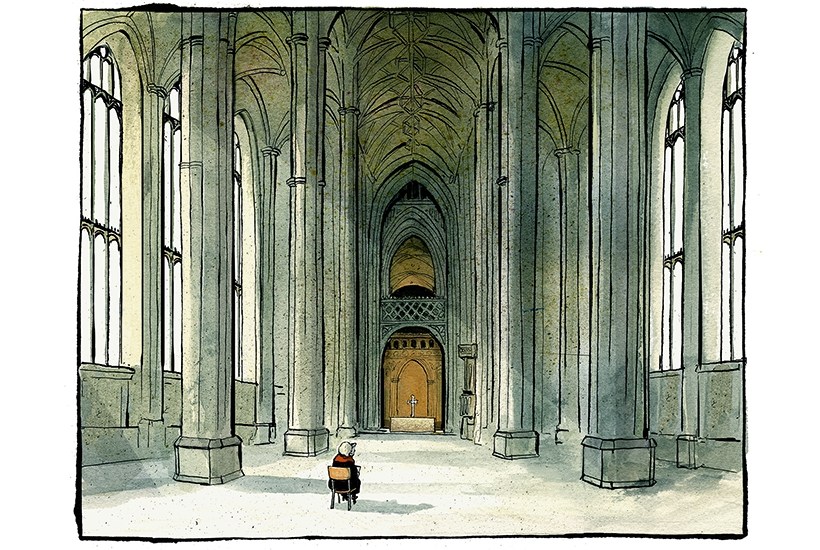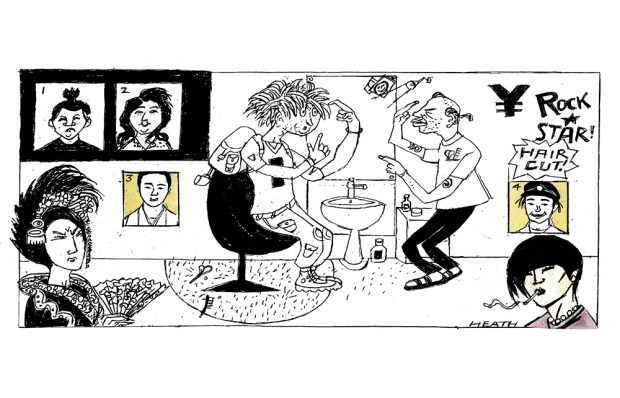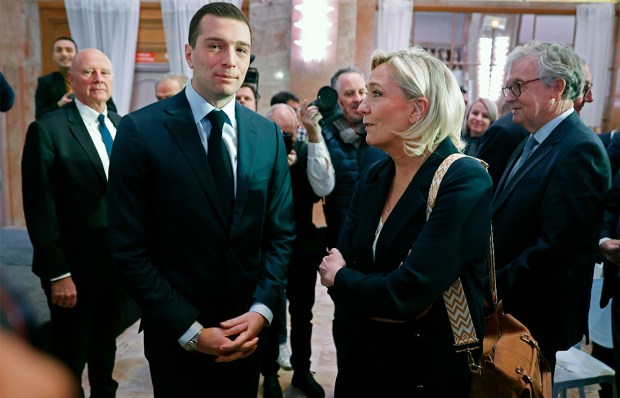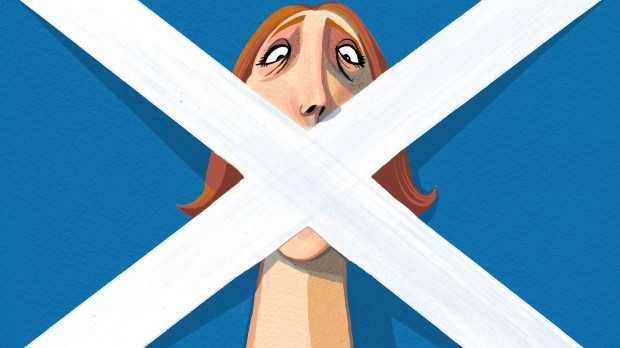On a beautifully sunny Maundy Thursday last year, during the first lockdown, I removed my cassock, slung my satchel over my shoulder and rode my bicycle to Lambeth Palace and back. At the halfway point I paused briefly to slip a letter under the Archbishop of Canterbury’s front door, before heading for home and the sad prospect of a solitary evening mass.
In my letter I asked the Archbishop to reconsider his request that we not pray in our churches. Communal worship was still forbidden, but the government clearly considered it lawful for the clergy to continue to go into their churches to pray on behalf of their absent congregations. Surely that is what we are here for? Of course, his request did not affect me — the Archbishop has no authority to close churches and tell clergy to stay at home — but many clergy were evidently doing what they were told. Some bishops, in other dioceses, even threatened legal action if we didn’t toe the line.
Many churches have sadly now closed again, especially in London, even though, unlike in the last two lockdowns, churches are (at the time of writing) permitted by law to stay open for communal worship. Our MPs, mayors and various religious leaders have written to us directly to ask us to close. I have compassion and respect for those who have yielded to the considerable pressure, but my church is one of the few in London to resist and I believe we are right to do so. An open church, in the depths of winter, is now one of the very few places a person can come to see others (albeit masked) and to get out of their flats. If our church door being open means that just one young man, with the world at his feet, doesn’t take his own life in isolation and despair, then it’s worth it.
During the first lockdown, while remaining lawful, our parish church was perhaps less ‘closed down’ than many churches. We set up an outdoor shrine with a great crucifix for prayer, where candles could be lit (-safely, of course) during the opportunity provided by daily exercise. The church bell was still rung two or three times a day to recall the people to God and to remind them that the offices of morning and evening prayer and the mass were being offered to God for them, even if they were currently prevented from joining in. People were responsive and grateful for this and in particular for the familiar sound of the bell.
Church bells and priests go back a long way. We have been hanged from them in time of revolution, we have been enjoined to ring them in time of invasion or victory, and ringing them every day is one of the few duties placed upon us by the Prayer Book. The priest is to ‘cause a Bell to be tolled…that the people may come to hear God’s Word and to pray with him’.
Last spring, the Archbishops of Canterbury and York, via an ill-judged letter to all clergy, achieved that which even Old Nick couldn’t have dreamed of: they caused most of the church bells in England not to be tolled. Many people of course couldn’t work from home, but they suggested that clergy could. We were put under great pressure to ‘go online’. Those of us who wanted to maintain a ministry of presence, both in the street and by ringing the church bell, were accused by some of our fellow priests of ‘flashing our privilege’ by simply donning our cassocks and getting on with the job. It seemed more important to me than ever in my 25 years as a priest that we were now out and about on foot, visible and approachable among our poor, terrified flocks.
Perhaps the Archbishops’ letter shouldn’t have surprised me. There is what might be called an ‘incarnational deficit’ at the heart of the Church of England today. It has been growing over recent years but has now got its hands on very many of the levers of power. The Christian faith is grounded in the central mystery of the incarnation: the word was made flesh and dwelt among us. God did not reside on Mount Sinai reissuing successive tablets of stone. Rather, he got stuck into the mess and mortality that is the lot of the human race. Our sacramental faith and worship is born of this incarnational mystery: we are embodied and creaturely and we respond to the embodied and the creaturely. Human warmth, a smile, a handshake or a hug; singing hymns, the sound of bells and the smell of incense, listening to the word of God together, receiving the body and blood of Christ: all of this and more is the stuff of our worship. It doesn’t ‘go online’ any more successfully than a visit to the pub or a children’s birthday party.
The incarnational deficit in the Church is bloodless and disembodied. If it takes flesh at all, it does so in the likenesses of a dull managerialism, an aversion to risk, an obsession with statistics and restructuring, and with the pernicious encroachments of critical race theory and unconscious bias training. During the first lockdown the poor parochial clergy were reminded endlessly that our first duty was to stay at home, protect the NHS and save lives — and that even though our churches were now closed for worship, it was wonderful and right that they should be open for food banks and blood donor sessions. I rubbed my eyes in dis-belief. Baked beans and nappies: good! Body of Christ: bad? Pints of human blood: good! The blood of Christ: bad? Surely we could have both?
During the first lockdown, I had an encounter that I’ll never forget. As I was walking down the lane outside the church, a neighbour called Steve stopped me and asked whether or not it was true that we had been closed down for public masses. I replied that it was indeed true. Steve, with the characteristic frankness you would expect of a man who played several times for Millwall in the 1960s, shook his head sadly and said: ‘Either it matters or it don’t.’
Got something to add? Join the discussion and comment below.
Get 10 issues for just $10
Subscribe to The Spectator Australia today for the next 10 magazine issues, plus full online access, for just $10.
You might disagree with half of it, but you’ll enjoy reading all of it. Try your first month for free, then just $2 a week for the remainder of your first year.














Comments
Don't miss out
Join the conversation with other Spectator Australia readers. Subscribe to leave a comment.
SUBSCRIBEAlready a subscriber? Log in